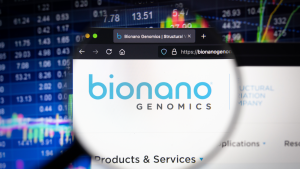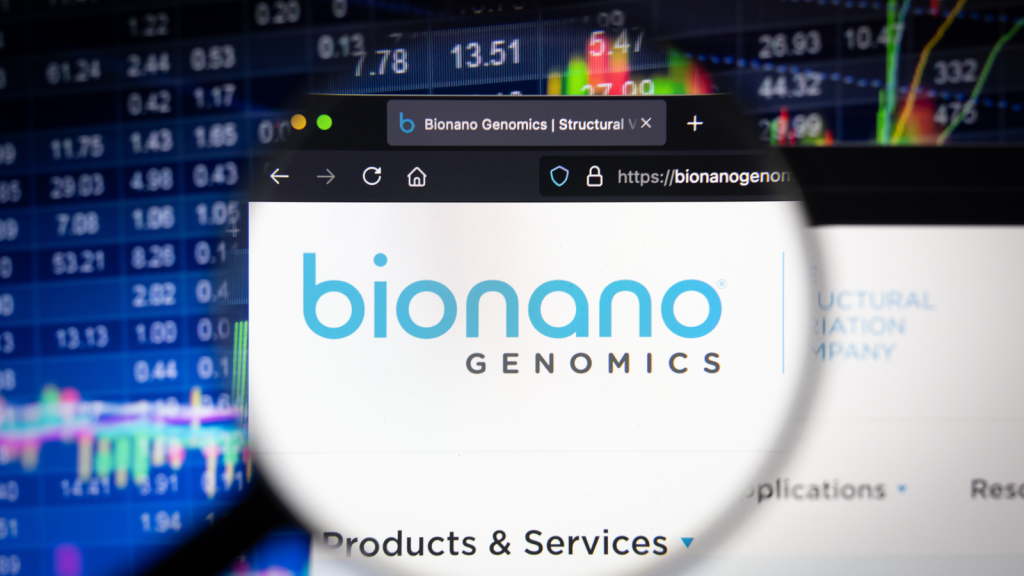Bionano Genomics (NASDAQ:BNGO) is a life sciences instrumentation company focused on the genome analysis space. Its products include Saphyr, Bionano Chips, Bionano Prep Kits, and Bionano Data Solutions.

The firm has discovered research about cancer, genetic diseases, and genome assembly, whereas its clinical research is about Facioscapulohumeral Muscular Dystrophy (FSHD) and cytogenetics. The vision is to “transform the way the world sees the genome”.
Their flagship product is Saphyr, an optical genome mapping instrument with a wide range of applications. Some of the most notable include undiagnosed genetic disorders, hematologic malignancies, solid tumor research, gene discovery, gene therapy and evolutionary biology.
I find evolutionary biology especially fascinating for purposes of scientific research. It could also be a smashing hit for sales and boost the revenue growth of Bionano Genomics. The truth isn’t quite so flattering.
Bionano Genomics: Strong Financial Strength, Poor Financial Performance
Let’s start with a hypothetical scenario.
Imagine that a test was given to a class of finance students about BNGO stock. The question is to describe how a company with a strong balance sheet and no debt as of Sep. 30, 2021, has a 1-year performance of nearly -84% for its stock price. In fact, its shares have already lost approximately 32% in 2022.
In theory and reality, this is not a hard test. Astute students and investors can analyze profitability, sales growth and free cash flow generation.
So what are key insights? First, that BNGO stock has a Beta of 1.91 (5Y Monthly).
This means that the stock moves in theory 91% more or less following the broader stock market such as S&P 500. It is a lot of volatility, and a very large part of the stock decline is attributed to the high Beata value.
Still, with a 1-year return of nearly 12% for the S&P 500 as of Feb. 17, 2022, BNGO stock price should have theoretically gained about 23% in the past year. This is of course, not true. Finance has a lot of theories that often are not close friends with reality.
So the question to answer now is “what are the red flags for Bionano Genomics stock?”
The most obvious problem is that sales growth has slowed down a lot in recent years. Having three consecutive years of lower revenue growth for 2018, 2019 and 2020 spells trouble. To make things worse in 2019 and 2020 sales growth was negative which intensified the first major weakness in the business model of Bionano Genomics.
The firm reported sales declines of -15.59% and -16.06% for 2019 and 2020 respectively.
Turning to operating expenses, there the trend has been increases. So operating income has been negative and net losses are widening over time. In 2020 Bionano Genomics reported a net loss of $41.11 million.
Free cash flow growth was also negative for every year during the 2017 to 2020 period. Once again things got worse in 2020, as the reported number of ($38.31 million) for free cash flow was the worst figure in five years.
An Accounting Trick Not to Neglect
Shareholders of Bionano Genomics have been diluted in the past year, with total shares outstanding growing by 6.4%.
This is the base news for valuation analysis. But I am mentioning this for another reason, and that’s Additional Paid-In Capital (APIC). What is APIC? It is the value of share capital above its stated par value.
Why does it matter? Bionano Genomics in its latest form 10-Q for Q3 2021 stated it had a par value for its common stock of $0.0001. The formula for APICis very straightforward: APIC = (Issue Price – Par Value) x number of shares acquired by investors.
In early Jan. 2021, Bionano Genomics announced a stock offering of $200 million, offering 33,333,350 shares of common stock to the public at $6.00 per share.
A difference of $6 versus just $0.0001 multiplied by nearly 33 million is huge. It dramatically increases Equity on the balance sheet, and we know that Equity is used for valuation purposes and financial analysis ratios.
In the end, Bionano Genomics has used this accounting trick to improve its Equity section and has thus harmed the valuation of its stock.
I do not like BNGO stock. And based on the APIC accounting, neither should you. It has a strong financial strength that cannot compensate for its poor financial results. The argument is simple and compelling.
On the date of publication, Stavros Georgiadis, CFA did not have (either directly or indirectly) any positions in the securities mentioned in this article. The opinions expressed in this article are those of the writer, subject to the InvestorPlace.com Publishing Guidelines.
Stavros Georgiadis is a CFA charter holder, an Equity Research Analyst, and an Economist. He focuses on U.S. stocks and has his own stock market blog at thestockmarketontheinternet.com/. He has written in the past various articles for other publications and can be reached on Twitter and on LinkedIn.
